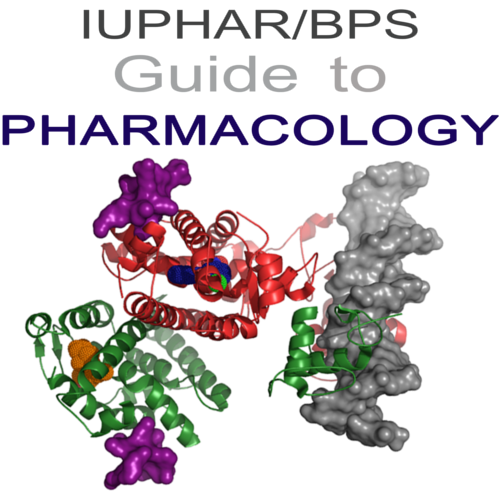5-HT<sub>3</sub> receptors in GtoPdb v.2021.3
Abstract
The 5-HT3 receptor (nomenclature as agreed by the NC-IUPHAR Subcommittee on 5-Hydroxytryptamine (serotonin) receptors [69]) is a ligand-gated ion channel of the Cys-loop family that includes the zinc-activated channels, nicotinic acetylcholine, GABAA and strychnine-sensitive glycine receptors. The receptor exists as a pentamer of 4 transmembrane (TM) subunits that form an intrinsic cation selective channel [7]. Five human 5-HT3 receptor subunits have been cloned and homo-oligomeric assemblies of 5-HT3A and hetero-oligomeric assemblies of 5-HT3A and 5-HT3B subunits have been characterised in detail. The 5-HT3C (HTR3C, Q8WXA8), 5-HT3D (HTR3D, Q70Z44) and 5-HT3E (HTR3E, A5X5Y0) subunits [86, 125], like the 5-HT3B subunit, do not form functional homomers, but are reported to assemble with the 5-HT3A subunit to influence its functional expression rather than pharmacological profile [127, 66, 161]. 5-HT3A, -C, -D, and -E subunits also interact with the chaperone RIC-3 which predominantly enhances the surface expression of homomeric 5-HT3A receptor [161]. The co-expression of 5-HT3A and 5-HT3C-E subunits has been demonstrated in human colon [85]. A recombinant hetero-oligomeric 5-HT3AB receptor has been reported to contain two copies of the 5-HT3A subunit and three copies of the 5-HT3B subunit in the order B-B-A-B-A [9], but this is inconsistent with recent reports which show at least one A-A interface [99, 154]. The 5-HT3B subunit imparts distinctive biophysical properties upon hetero-oligomeric 5-HT3AB versus homo-oligomeric 5-HT3A recombinant receptors [35, 44, 59, 88, 143, 132, 82], influences the potency of channel blockers, but generally has only a modest effect upon the apparent affinity of agonists, or the affinity of antagonists ([19], but see [44, 33, 38]) which may be explained by the orthosteric binding site residing at an interface formed between 5-HT3A subunits [99, 154]. However, 5-HT3A and 5-HT3AB receptors differ in their allosteric regulation by some general anaesthetic agents, small alcohols and indoles [142, 139, 73]. The potential diversity of 5-HT3 receptors is increased by alternative splicing of the genes HTR3A and HTR3E [67, 21, 127, 126, 123]. In addition, the use of tissue-specific promoters driving expression from different transcriptional start sites has been reported for the HTR3A, HTR3B, HTR3D and HTR3E genes, which could result in 5-HT3 subunits harbouring different N-termini [156, 82, 123]. To date, inclusion of the 5-HT3A subunit appears imperative for 5-HT3 receptor function.

This work is licensed under a Creative Commons Attribution-ShareAlike 4.0 International License.










